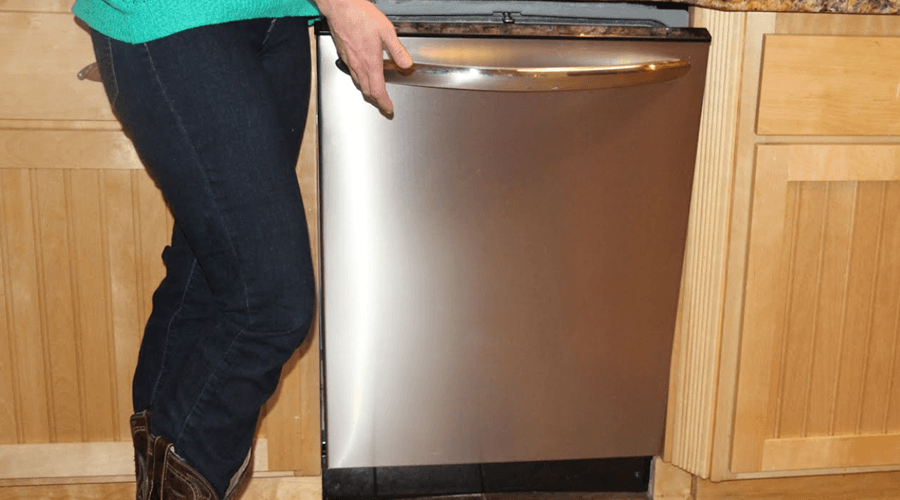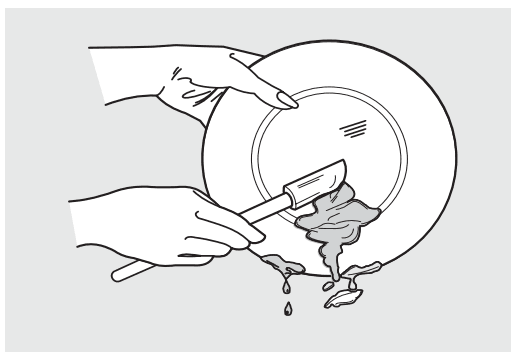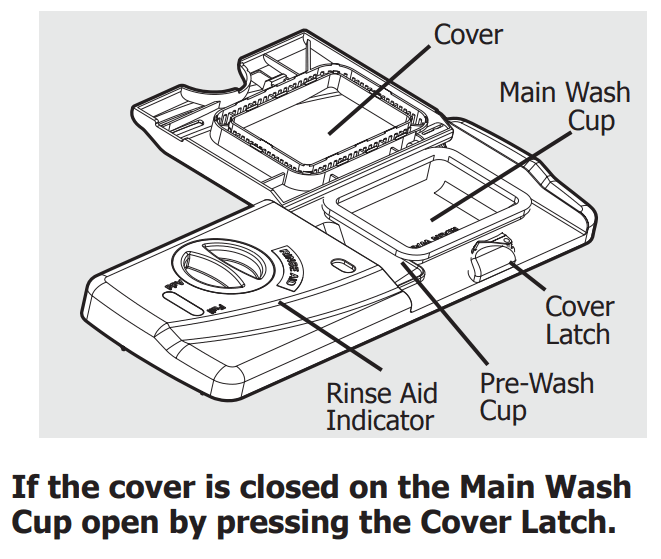Frigidaire Gallery Dishwasher
IMPORTANT SAFETY INSTRUCTIONS
For your Safety
- Use your dishwasher only as instructed in this Use and Care Manual.
- This Manual does not cover every possible condition and situation that may occur. Use common sense and caution when installing, operating, and maintaining any appliance.
- NSF-certified residential dish washers are not intended for licensed food establishments.
- DISHWASHER MUST BE ELECTRICALLY GROUNDED. Read the Installation Instructions for details.
WARNING: Please read all instructions before using this dishwasher. - This dishwasher is designed to operate on regular house current (120V, 60Hz). Use a circuit equipped with a 15-ampere fuse or circuit breaker. Use a 20-ampere fuse if the dishwasher is connected to a food disposer.
- Do not operate the dishwasher unless all enclosure panels are in their proper place.
- To avoid entrapment and/or suffocation, remove the door or door latch mechanism from any dishwasher that is discarded or not in use.
- Keep young children and infants away from the dishwasher when it is operating.
- Do not let children abuse, sit, stand, or play on the door or racks of a dishwasher.
- Use only detergents and rinse agents recommended for use in a dishwasher.
- Store dishwasher detergent and rinse agents out of the reach of children.
- Do not wash plastic items unless marked: “Dishwasher Safe” or equivalent. Check with the manufacturer for recommendations, if not marked. Items that are not marked dishwasher safe may melt and create a potential fire hazard.
- Disconnect electrical power to the dishwasher before servicing.
- If the dishwasher drains into a food disposer, make sure the disposer is completely empty before running the dishwasher.
- Repairs should be done by a qualified technician.
- Do not tamper with controls.
- Do not touch the heating element during or immediately after
- Use care unloading the dishwasher when the SANITIZE option has been selected. Contents may be hot to the touch immediately after the end of the cycle.
- Water vapor from the vent may be hot to the touch when the SANITIZE option has been selected. Use care and do not let small children play around or touch the vent area of the dishwasher.
- When loading items to be washed: Locate sharp items and knives so that they are not likely to damage the door seal or tub. Load sharp items and knives with the handles up to reduce the risk
of cut-type injuries. - Under certain conditions, hydrogen gas may be produced in a hot water system that has not been used for 2 weeks or more. HYDROGEN GAS IS EXPLOSIVE. If the hot water system has not been used for such a period, before using a dishwasher, turn it on for several minutes This will release any accumulated hydrogen gas. HYDROGEN GAS IS FLAMMABLE. Do not smoke or use an open flame during this time.
- Do not store or use combustible materials, gasoline, or other flammable vapors and liquids in the vicinity of this or any other appliance.
Getting Started
- Load Dishwasher (See Preparing and Loading Dishes).
- Add detergent (See Dishwasher Dispenser & Detergents).
- Add Rinse Aid, if needed (See Rinse Aid).
- Select the desired CYCLE (See Cycle Chart). The indicator light will glow when selected.
- Select the desired OPTION (See Energy Options). The indicator light will glow when selected.
- Run the hot water faucet nearest the dishwasher until water is at or near 120° F for optimal performance (See Water Temperature). Turn the water off.
- To start, Press the START/CANCEL pad then close the door firmly within 4 seconds.
FEATURES AT A GLANCE
Your dishwasher cleans by spraying a mixture of hot water and detergent through the spray arms against soiled surfaces. First, the dishwasher fills with water covering the filter area. Water is then pumped through the spray arms. Soil particles go across the filter and down the drain as the water is pumped out. This series of steps are repeated as needed. The number of water fills vary with the cycle being used.
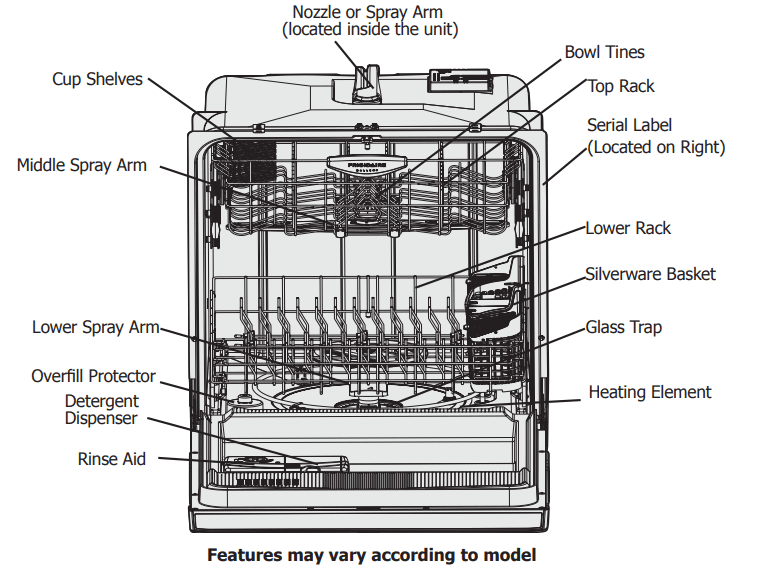
Wash Cycle Selections
Cycle times are approximate and will vary with the options selected. Hot water is necessary to activate dishwasher detergent and melt fatty food soils. An automatic sensor will check the incoming water temperature and, if it is not hot enough, the cycle will be lengthened for automatic water heating in the main wash and final rinse of all cycles. This happens even when the HI-TEMP WASH option has not been selected. When HI-TEMP WASH is selected, an even higher temperature will be reached to handle heavier soil loads.
NOTE: Lights on the console will remain on once the door is shut and the wash cycle begins. If it is preferred to have the lights turned off while the cycle is running see the Console Lights section for instructions.
Option Selections (available on select Models)
Hi-Temp Wash Option
When the HI-TEMP WASH option is selected, the dishwasher heats water in the main wash to approximately 140° F (60° C). This increase in water temperature helps the dishwasher detergent remove food grease and soil from dishes more effectively and aids in drying. HI-TEMP WASH option is available on POWER PLUS, NORMAL WASH, and TOP RACK cycles. HI-TEMP WASH is automatically
provided when the POWER PLUS cycle is selected.
When the HI-TEMP WASH option is selected, the indicator light will come on and remain on until the end of the cycle. To turn off the HI-TEMP WASH option, press HI-TEMP WASH a second time. The indicator light will turn off.
OPERATING INSTRUCTIONS
Heat Dry/Air Dry
The use of the HEAT DRY option, especially in combination with the use of a rinse agent, will enhance drying. If AIR DRY is selected the heater will be de-activated during the drying phase of the selected wash cycle. This will slightly lower the energy use but will increase the likelihood that the dishware will not dry completely.
MaxBoost Dry TM
When the MaxBoost DryTM option is selected, the dishwasher extends the drying time by approximately 20 minutes. The MaxBoost DryTMoption can be used with all cycles except CHINA CRYSTAL, ENERGY SAVER and RINSE ONLY. For best drying performance, also apply an increased wash temperature by selecting HI-TEMP WASH or even better, the SANITIZE option.
The energy required to use the MaxBoost DryTM option costs pennies per cycle. You may choose not to select the MaxBoost DryTM option; however, you may have items in your dish load that will not be completely dry at the end of the cycle.
Sanitize Option
To sanitize your dishes and glassware, select the SANITIZE option. When selected, the indicator light will come on and remain on until the end of the cycle. The water temperature in the final rinse will be raised to 156° F (69° C). This option is available in POWER PLUS, NORMAL WASH, and TOP RACK Cycles. Only these sanitization cycles have been designed to meet NSF requirements.
The cycle time will be extended until the proper water temperature is reached. Washing action will continue during the water heating delay. For best results, the incoming water temperature should be at least 120° F (49° C).
The sanitizing criteria may not be satisfied if there is an interruption of the cycle, power failure or if the incoming water temperature is below 120° F (49° C). To turn off the SANITIZE option, press SANITIZE a second time. The indicator light will turn off.
Favorite Cycle
The FAVORITE CYCLE option allows you to program your preferred cycle and options into one button. Once Programmed, simply select FAVORITE CYCLE and then select START/CANCEL. To Program the FAVORITE CYCLE:
- Select your preferred cycle and options
- Press FAVORITE CYCLE for 3 seconds
The display will flash for 2 seconds indicating the FAVORITE CYCLE option has been programmed. To change the FAVORITE CYCLE option simply repeat steps one and two above.
Delay Start
The DELAY START option allows you to automatically delay starting your dishwasher 1-24 hours. To start the DELAY START option, press DELAY START until the desired delay time shows in the STATUS window. A light will come on indicating the delay has been set and will remain on until the cycle starts. Press the START/CANCEL pad to start the delay option. If the delay option is interrupted, the START/CANCEL pad will have to be pressed again to return to the delay option.
To cancel the DELAY START option and to begin the selected cycle before the delay period is over, press and hold the START/CANCEL pad for 3 seconds.
To Cancel a Cycle
You can cancel a cycle anytime during the cycle. Press and hold the START/CANCEL pad for 3 seconds. The light above the cycle and option selected will go out, and the START/CANCEL light will remain illuminated, and the dishwasher will start a 90-second drain. At the end of the drain, select the next desired cycle.
Child Lock Controls
To prevent children from accidentally changing the dishwasher cycle or starting the dishwasher, to lock the dishwasher controls press and hold DELAY START for 3 seconds. An indicator light on the lock graphic pad will illuminate when the controls are locked and no new selections can be made until the lock is released. To unlock the controls, press DELAY START again for 3 seconds, and the indicator
light will go out.
Status Indicator Lights
The console lights provide information about the cycle selection and current status. During operation, while the door is closed, these lights will remain on. At the completion of the cycle, the clean light will come on. The sanitization light will also come on if that option is selected and sanitization is achieved during the wash cycle.
Status Window
The STATUS window, available on some models, indicates the following activity:
1H-24H…………. Number of delay start hours. The last hour will count down in minutes.
MINUTES………. A number of minutes left in the cycle (1-199).
CLOSE DOOR…. The closed door will scroll one time in the status window.
In the unlikely event that the dishwasher malfunctions displays the error code “Uo”, or gives poor performance you can call the Frigidaire Customer Care Center at 1-800-944-9044. They will be able to
provide assistance in troubleshooting the problem and/or locating an authorized service technician if needed.
Console Lights
If it is desired to have the console lights remain off while running, perform the following operation: Prior to starting a cycle, press and hold POWER PLUS and RINSE ONLY simultaneously for approximately 8 seconds until the corresponding lights flash. This will turn the console lights off during cycle operation. Simply repeat this operation to revert back to the previous setting.
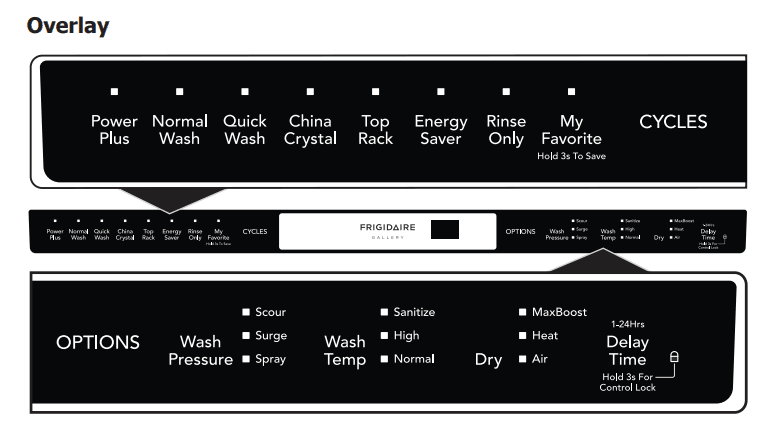
The DishSenseTM Technology checks the soil level on your dishes in the POWER PLUS, NORMAL WASH TOP RACK, and ENERGY SAVER cycles. In response, automatic cycle adjustments are made to ensure the dishware gets clean – with less food the cycle gets shorter. Cycle time will also vary based on the options selected and the incoming water temperature. Not all cycles are available on all models.
Cycle and Option Chart
| Cycle and intended use | Available Options Pressure; Temperature; Drying | Water per Cycle | Duration* (approx.) |
| Power Plus* Recommended for pots, pans, casseroles and dinnerware hav- ing light to heavily soiled loads. | Scour, Surge; Sanitize, Hi-Temp; Sahara, Heat, Air | 7.1 – 9.4 gal. 27 – 36 L. | 2 3/4 – 4 Hours |
| Normal Wash* Recommended for lightly to heavily soiled loads. | Scour, Surge, Spray; Sanitize, Hi-Temp, Normal; Sahara, Heat, Air | 3.4 – 9.2 gal. 13 – 35 L. | 1 3/4 – 4 Hours |
| Quick Wash Recommended for lightly soiled loads only. | Surge; Normal; Sahara, Heat, Air | 5.4 gal. 20 L. | 34 Min. (Air Dry Only) |
| China Crystal Recommended for lightly soiled China, Crystal or other delicate items. | Surge, Spray; Normal; Heat, Air | 6.0 gal. 23 L. | 1 1/2 – 2 1/2 Hours |
| Top Rack* Recommended for small loads in the upper rack only that are light to heavily soiled. | Scour, Surge, Spray; Sanitize, Hi-Temp, Normal; Sahara, Heat, Air | 4.9 – 9.3 gal. 19 – 35 L. | 1 – 4 Hours |
| Energy Saver* Recommended for lightly soiled loads. | Scour, Surge, Spray; Normal; Air | 4.8 – 5.8 gal. 18 – 22 L. | 1 1/2 – 2 1/2 Hours |
| Rinse Only For rinsing dishware that will be washed later. | Surge | 2.5 gal. 9 L. | 16 Min. (Air Dry Only) |
* Cycle uses Soil Sensing feature to determine best Wash performance.
PREPARING AND LOADING DISHES
Dish Preparation
Scrape away large pieces of food, bones, pits, toothpicks, etc. The continuously filtered wash fluid will remove the remaining food particles. Burned-on foods should be loosened before loading. Empty liquids from glasses and cups. Foods such as mustard, mayonnaise, vinegar, lemon juice, and tomato-based products may cause discoloration of stainless steel and plastics if allowed to sit for a long period of
time. Unless the dishwasher is to be operated at once, it is best to pre-rinse or use the RINSE ONLY cycle to rinse off these food soils.
- Load racks so that large items do not prevent the detergent dispenser from opening.
- Check the manufacturer’s recommendations before washing the items in question.
- If the dishwasher drains into a Food dispenser, be sure the disposer is completely empty before starting the dishwasher.

Loading the Top Rack
Features and appearance of racks and silverware baskets as shown may vary from your model. The upper rack is designed for flexibility in loading a wide variety of items including cups, glasses, stemware, small plates, bowls, etc. Load glasses in the top rack only. Damage may occur if placed in the bottom rack. Load plastic items in the top rack only. Melting may occur if placed in the bottom rack. Load items with open ends facing down for better cleaning and draining. Damage may occur if delicate items touch each other during dishwasher operation. Long-handled knives and utensils can be placed in the top rack. Be sure nothing protrudes through the bottom of the rack to block the rotation of the middle spray arm.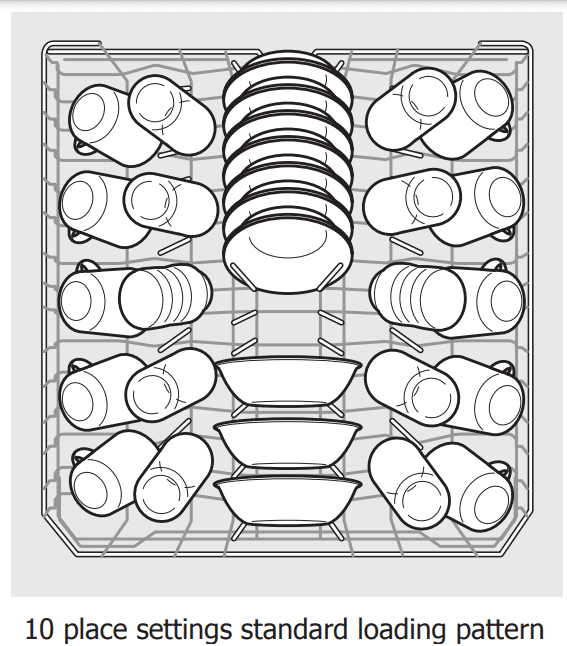
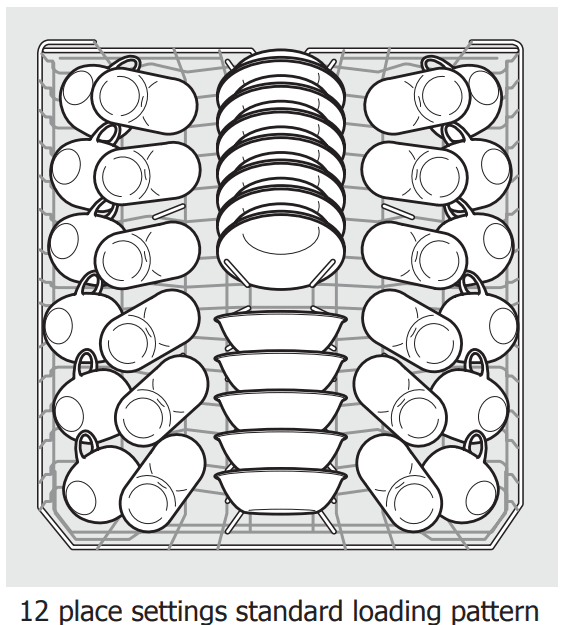
Some models have a fold-down cup shelf or a cup shelf/stemware holder. They can be used to load two levels of cups, juice glasses, and other short items. Stagger items on the upper level so that water can reach all inside surfaces. Fold up to load tall glasses.
Upper Rack
The UPPER RACK cycle directs cleaning only to items in the upper rack and can be used to wash a wide assortment of items. It is useful for washing partial loads – especially when the upper rack fills up with glasses and the lower rack is still empty. STEMWARE HOLDER/CUPSHELF is not available on all models.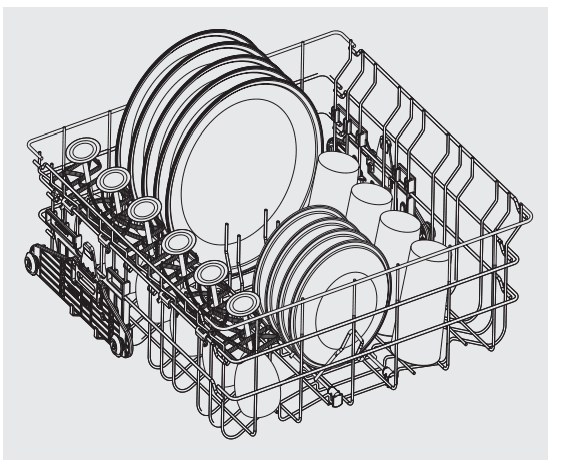
Adjustable Upper Rack
To raise the upper rack, refer to the figure below. Press the lever toward the center of the rack and pull straight up on the rack.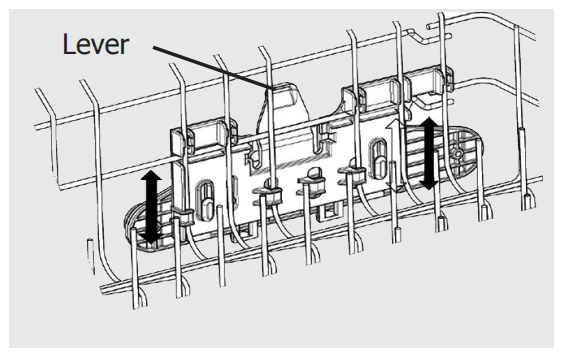
To lower the upper rack, press the lever and push down on the rack.
Bowl Tines
The bowl times offer the ultimate in flexibility. When closed, load with saucers or small dishes. Open halfway and it is perfect for small casserole dishes. Open completely for those hard-to-fit items. As you load your dishwasher, you will find many other ways to use this unique feature.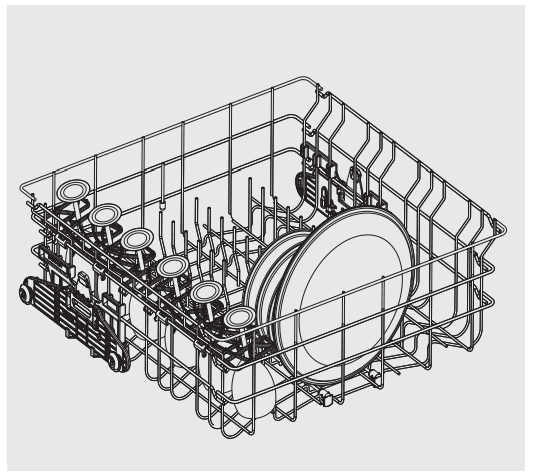

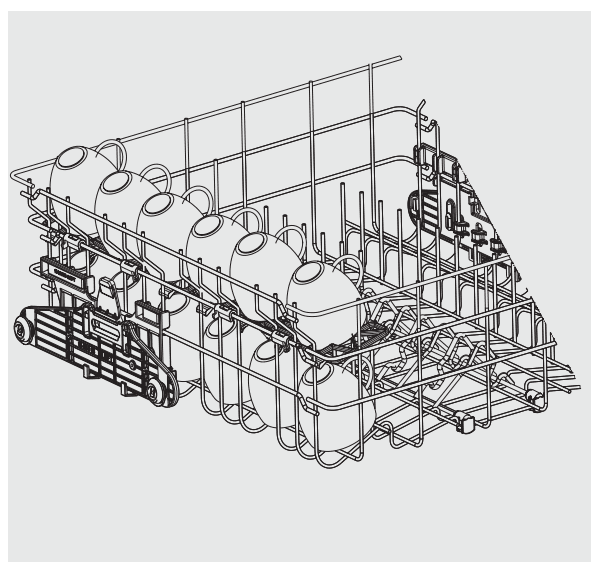
Loading the Bottom Rack
Features and appearance of racks and silverware baskets as shown may vary from your model. The lower rack is best for plates, saucers, bowls, and cookware. Large items should be placed along the edge so they do not block the spray arm rotation. For best results, place bowls, casseroles, and saucepans with the soiled surface facing down and toward the center. Tilt slightly for better drainage. Spin the middle spray arm to make sure that tall items do not block the rotation Be sure pan handles do not protrude through the bottom of the rack and block the lower spray arm rotation.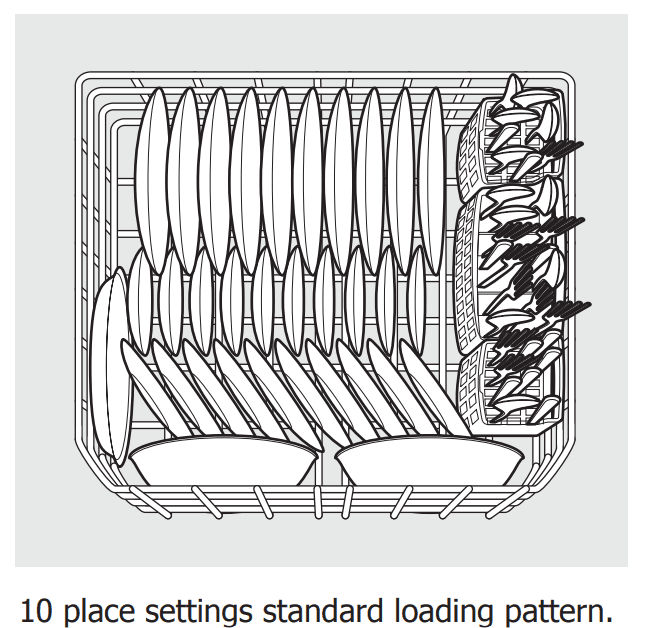
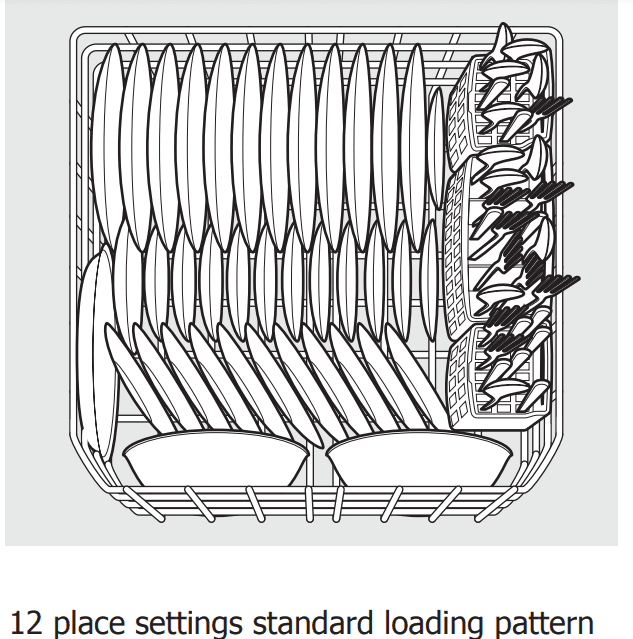
Fold-down Tines
The fold-down tines in the lower rack make easy loading for those extra large and hard-to-fit items. The tines may be left up for normal use or folded down for more flexible loading. Fold down for more space to load large pots or pans.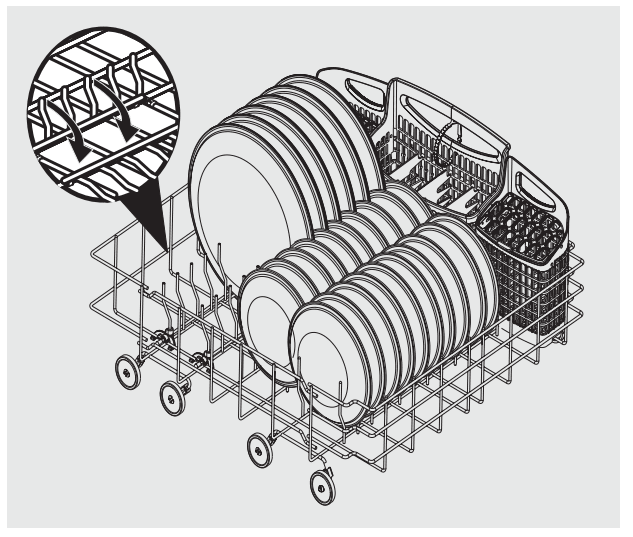
Loading the Silverware Basket
Features and appearance of racks and silverware basket as shown may vary from your model. Load the silverware basket while it is in the bottom rack or take the basket out for loading on a counter or table.
For baskets with lids, small items like baby bottle caps, jar lids, corn cob holders, etc., can be placed in a covered section to hold them in place.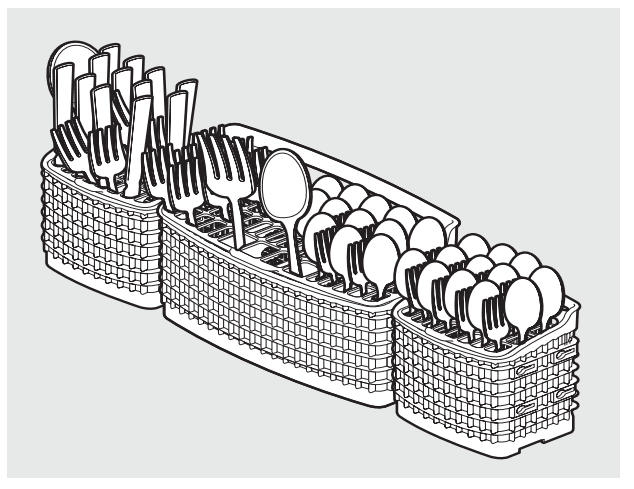
Use suggested loading patterns, as shown, to increase the washability of the silverware. Be sure nothing protrudes through the bottom of the basket or rack to block the spray arm. To avoid damaging the silver finish do not mix silver and stainless. When covers are up, mix items in each section of the basket with some pointing up and some down to avoid nesting. Water spray cannot reach nested items.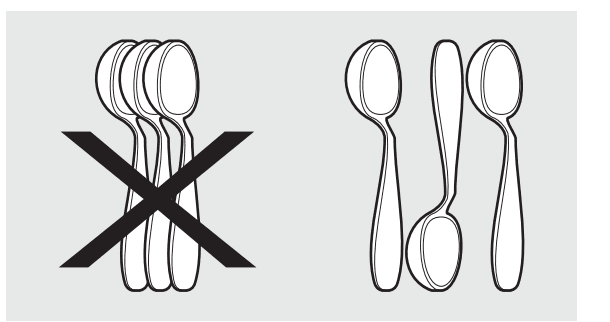
Adding a Dish
To add or remove items after the wash cycle starts:
- Unlatch the door and wait a few seconds until the wash action stops before opening.
- Add the item, move the door to a near-closed position, and wait a few seconds while the cold air slowly expands inside the dishwasher.
- Press the START/CANCEL pad then close the door firmly within 4 seconds to resume.
DISHWASHER DISPENSER AND DETERGENT
Filing the Detergent Dispenser
The detergent dispenser has two detergent cups. The smaller one is for addition to the pre-wash and the larger is for release to the main wash.
- Use only fresh automatic dishwashing detergent. Other detergents may cause oversudsing.
- When using automatic dishwashing detergent tablets or packets, use only one tablet or packet, place it in the main wash cup, and close it.
- Add detergent just before starting the cycle.
- Store detergent in a cool, dry location and discard any that becomes moist or caked.

Detergent Usage Chart
| Cycle | Soft Water (0-3 grains) | Medium Hard Water (4-8 grains) | Hard Water (9-12 grains) | Very Hard Water (Over 12 grains) |
| Power Plus or Normal Wash | 2 teaspoons (each cup- 1/4 full) | 5 teaspoons (each cup- fill to line above “Regular”) | 8 teaspoons (each cup- completely full) | Each Cup- Completely Full (water softener recommended) |
| Top Rack, Quick Wash, China Crystal or Energy Saver | 2 teaspoons (Main Wash cup- 1/4 full) | 5 teaspoons (each cup- fill to line above “Regular”) | 8 teaspoons (Main Wash cup- completely full) | Main Wash Cup- Completely Full (water softener recommended) |
| Rinse Only | No Detergent | No Detergent | No Detergent | No Detergent (water softener recommended) |
FACTORS AFFECTING PERFORMANCE
Rinse Aid
Rinse aid greatly improves drying and reduces water spots. With it water “sheets” off dishes rather than forming water droplets that cling and leave spots. A dispenser, located next to the detergent cup, automatically releases a measured amount of rinse aid during the last rinse. If spotting and poor drying are problems, increase the amount of rinse aid dispensed by rotating the dial to a higher number. The dial is located under the dispenser cap. The indicator will be dark when full and will show clear when it is time to refill. To add liquid rinse aid, turn the dispense cap 1/4 turn counterclockwise, and lift out. Pour in rinse aid until liquid touches the indicated fill level Replace the cap.
Do not overfill since this can cause oversudsing. Wipe up any spills with a damp cloth. The dispenser holds enough for 35 to 140 washes, depending on the dial setting.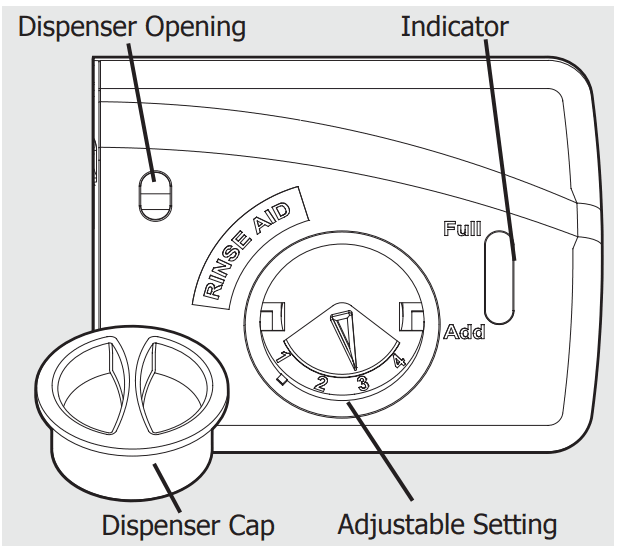
The HEAT DRY option in combination with rinse aid will enhance drying performance. The energy required to use the HEAT DRY option costs pennies per cycle. You may choose not to select the HEAT
DRY option; however you will have items in your dish load that will not be completely dry at the end of the cycle.
CARE AND CLEANING

To empty the glass trap:
- Grasp the glass trap’s handle and rotate it 900 clockwise while pressing down on the center of the wash arm.
- Grab the spray arm in the center and lift the spray arm and glass trap assembly up and out from the dishwasher.
- Tip the assembly over an appropriate container and tap it to empty the glass trap. OR, separate the glass trap – pull the glass trap handle toward you, then up, then further toward you to slide it
away from the rest of the assembly; empty it into an appropriate container; then slide the glass trap back into the assembly. - Place the assembly back into position, press down on the arm at the center, and rotate the glass trap handle 900 counterclockwise making sure the glass trap ends in the orientation shown in the image above. To avoid damage to your unit make sure the spray arm and glass trap are fully snapped in place.
Overfill Protector-
keeps dishwasher from overfilling and is located in the left front corner of the tub.
- Clean occasionally with a household cleaner containing vinegar or bleach to dissolve any buildup.
- Overfill Protector should move up and down freely about one inch. If it does not move, lift and clean underneath.
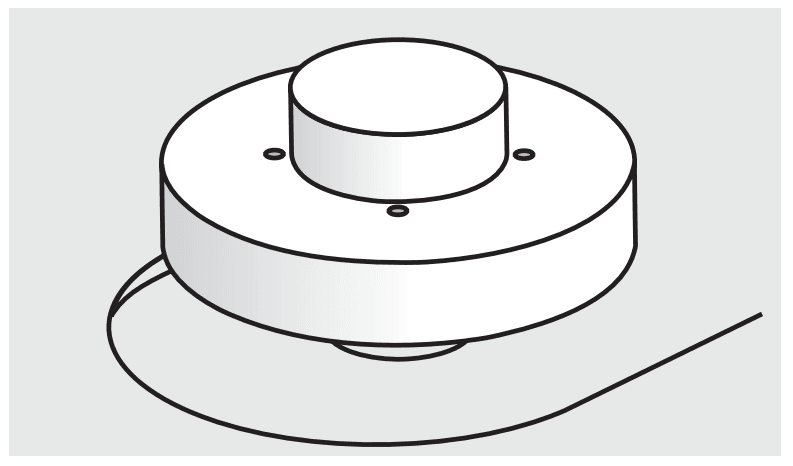
To Restore Service:
- Direct water line discharge into a pan and open the valve to flush the line.
- Reconnect the water, drain, and electrical power supply
- Turn on the water and electrical power supply.
- Fill both detergent cups and run the dishwasher through a POWER PLUS cycle.
- Check connections to make sure they do not leak.
BEFORE YOU CALL
Before calling for service, review this list. It may save you both time and expense. This list includes common experiences that are not the result of defective workmanship or material in your dishwasher.
Food Soils Left on Dishes
- Choose another cycle for a longer washing time.
- Check rack loading section for proper loading-avoid nesting items.
- Home water pressure may be too low-should be 20 to 120 pounds per square inch (psi).
- Check incoming water temperature. It should be about 120° F (49° C). (See Factors Affecting Performance.)
- Check water hardness. For extremely hard water, it may be necessary to install a water softener. (See Detergent Chart).
- Use Fresh Detergent.
- Make sure items are not blocking the spray arms, preventing them from rotating.
- Do not overload the dishwasher (See Preparing and Loading Dishes).
- Check to verify that the glass trap is maintained and installed properly (See Care and Cleaning).
Dishwasher Leaks
- Check that the door gasket is pressed into its mounting channel, reaches to the bottom of the tub, and does not extend beyond the end rib so as to interfere with door closure
- Spilled rinse aid can cause foam and lead to overflowing. Wipe up any spills with a damp cloth.
- Check to see that the dishwasher is level. (See Installation Instructions).
- Avoid oversudsing by using the correct amount of detergent designed for automatic dishwashers.
- Check to see that the dishwasher is level. (See Installation Instructions).
Removing Spots and Film
Hard water can cause lime deposit buildup on the interior of the dishwasher. Dishes and glasses may also get spots and film for a number of reasons. (See Glassware/Flatware Spotted or Cloudy section). To remove buildup and film, clean using the following instructions:
- Load clean dishes and glasses in the normal manner. Do not load any metal utensils or silverware.
- Do not add detergent.
- Select the NORMAL WASH cycle. Press START/CANCEL pad. Close the door.
- Allow dishwasher to run until it starts the second water fill (approximately 8 minutes)
- Open the door, and pour 2 cups of white vinegar into the bottom of the dishwasher.
- Press the START/CANCEL pad. Close the door and allow the cycle to finish.
MAJOR APPLIANCE WARRANTY
Your appliance is covered by a one-year limited warranty. For one year from your original date of purchase, Electrolux will pay all costs for repairing or replacing any parts of this appliance that prove to be defective in materials or workmanship when such appliance is installed, used, and maintained in accordance with the provided instructions.
Exclusions
This warranty does not cover the following:
- Products with original serial numbers that have been removed, altered or cannot be readily determined.
- Product that has been transferred from its original owner to another party or removed outside
the USA or Canada. - Rust on the interior or exterior of the unit.
- Products purchased “as-is” are not covered by this warranty.
- Food loss due to any refrigerator or freezer failures.
- Products used in a commercial setting.
- Service calls that do not involve malfunction or defects in materials or workmanship, or for appliances not in ordinary household use or used other than in accordance with the provided instructions.
- Service calls to correct the installation of your appliance or to instruct you how to use your appliance.
- Expenses for making the appliance accessible for servicing, such as removal of trim, cupboards,
shelves, etc., which are not a part of the appliance when it is shipped from the factory. - Service calls to repair or replace appliance light bulbs, air filters, water filters, other consumables, knobs, handles, or other cosmetic parts.
- Surcharges include but are not limited to, any after-hour, weekend, or holiday service calls, tolls, ferry trip charges, or mileage expenses for service calls to remote areas, including the state of Alaska.
- Damages to the finish of appliance or home incurred during installation, including but not
limited to floors, cabinets, walls, etc. - Damages caused by: services performed by unauthorized service companies; use of parts other than genuine Electrolux parts or parts obtained from persons other than authorized service companies; or external causes such as abuse, misuse, inadequate power supply, accidents, fires, or acts of God.
For more manuals by Frigidaire, visit ManualsLibraryy
Frigidaire Gallery Dishwasher-FAQs
How long does a Frigidaire Gallery dishwasher cycle take?
The duration varies by cycle:
1. Light cycle: ~105 minutes
2. Medium cycle: ~110 minutes
3. Heavy cycle: ~130 minutes
What is the shortest cycle available?
The 30-minute Quick Wash cycle is the fastest option.
Why does my dishwasher take so long to run?
Modern dishwashers use less water and energy, making them more efficient but requiring longer run times to ensure proper cleaning.
How much water does a Frigidaire Gallery dishwasher use per load?
It uses about 5 gallons per cycle, significantly less than the 27 gallons used for handwashing.
How can I clean my Frigidaire Gallery dishwasher?
Pour one cup of distilled white vinegar into the bottom of an empty dishwasher and run a normal cycle. For exterior cleaning, use a damp cloth on Smudge-Proof® models.
What should I do if my dishwasher won’t start?
Check for common issues such as power supply problems, a broken door latch, a defective timer switch, or a blown thermal fuse. If none of these are the issue, inspect the motor starter relay or drive motor.
How do I perform a hard reset on my dishwasher?
Depending on the model, you can either:
1. Turn off the power by unplugging or switching off the circuit breaker.
2. Press and hold the Start/Reset button on the control panel, then wait before starting a new cycle.
Is a Frigidaire Gallery dishwasher hardwired?
Yes, it must be hardwired by a professional electrician.
How long does a normal wash cycle take?
A normal cycle typically takes 60-80 minutes, but the exact duration depends on factors like water temperature and soil levels.

